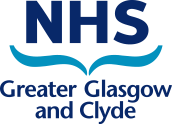Click here to access the full blog
Guideline News July 2025
Posted: Tuesday, August 12, 2025
Category - Medicines Update

GGC Medicines Update is a series of blogs with important medicines related messages relevant to all healthcare professionals across GGC.
Please note, Medicines Update blogs are correct at the time of publication.
Medicines Update blogs remain on the website for 4 years. If you would like a copy of a blog published more than 4 years ago, please contact ggc.medicines.update@nhs.scot.
Click here for a promotional poster on Medicines Update and here for an animation on the Communications subcommittee of ADTC responsible for the development of Medicines Update.
If you would like to contribute to Medicines Update, click here for further information and here for a guide to blog writing. When you email the committee to discuss writing a blog, you will be sent a checklist to complete prior to submitting the blog for review.
Posted: Tuesday, August 12, 2025
Category - Medicines Update
Click here to access the full blog
Posted: Monday, August 4, 2025
Category - Medicines Update
Click here to access the full blog
Posted: Thursday, July 31, 2025
Category - Medicines Update
Click here to access the full blog
Posted: Monday, July 7, 2025
Category - Medicines Update
Click here to access the full blog
Posted: Tuesday, July 1, 2025
Category - Medicines Update
Click here to access the full blog
Posted: Thursday, June 26, 2025
Category - Medicines Update
Click here to access the full blog
Cardiovascular diseases cause more than a quarter of all deaths in Scotland, the second most common cause of death after cancer.
The Cardiovascular Risk Factors Programme, launched in April 2025, aims to address this challenge with the goal of reducing avoidable premature CVD deaths by 20% in 20 years.
To support implementation of the programme a 'National cardiovascular disease (CVD) prevention and risk factors toolkit' has been created on the Right Decision Service website.
Posted: Thursday, June 26, 2025
Category - Medicines Update
Click here to access the full blog
Posted: Thursday, June 26, 2025
Category - Medicines Update
Click here to access the full blog
Posted: Thursday, June 12, 2025
Category - Medicines Update
Click here to access the full blog
The emollients section of the NHSGGC Adult Medicines Formulary has been updated in line with recommendations from a SLWG of dermatologists, GPs, specialist nurses and pharmacists.
Posted: Monday, June 9, 2025
Category - Medicines Update
Click here to access the full blog